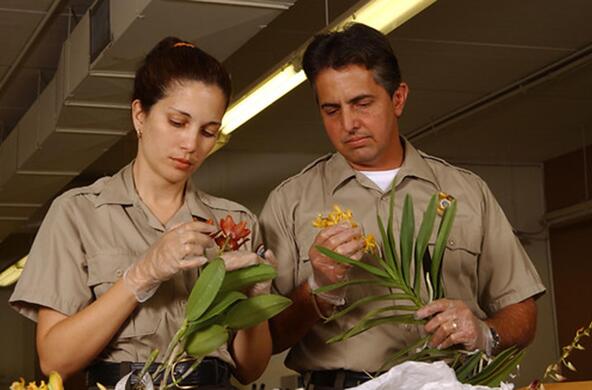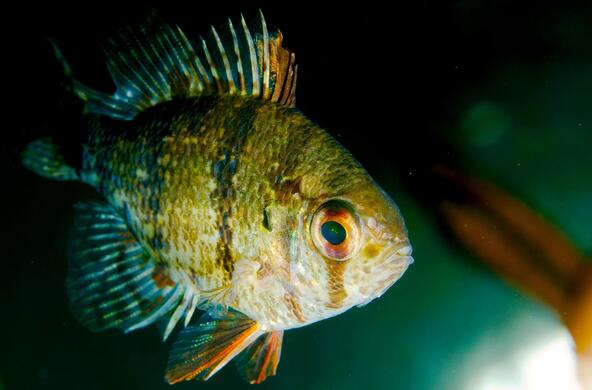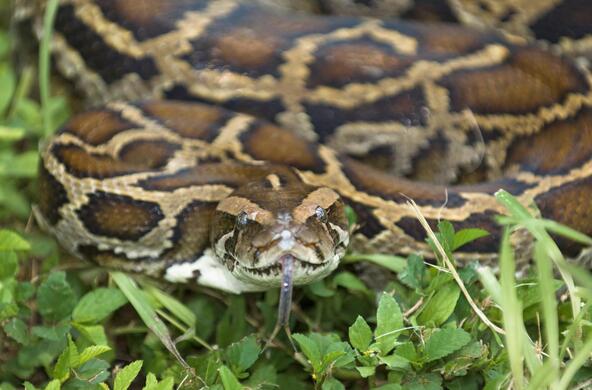Calling all gardeners and landscapers: Planting season has begun!
This year, take care to be sure that your "perfect plant" isn't actually a perfect menace in disguise. All you need to do is drive along Route 9 from Poughkeepsie to Ossining to see the repercussions of invasive plant takeover.
Forest and grassland visible from the road are completely dominated by non-native plant populations, including Japanese knotweed, Garlic mustard and Japanese barberry.
The National Invasive Species Council (NISC) describes invasive species as "plants, animals, or pathogens that are non-native (or alien) to the ecosystem under consideration and whose introduction causes or is likely to cause harm."
Many invasive plants are escaped ornamentals that come from the yards and gardens of good-intentioned people. These folks with a keen eye for aesthetics probably don't realize that one of their choice plants can wreak havoc on the local ecosystem.
Invasive species negatively impact biodiversity and create imbalance in natural ecosystem dynamics by interfering with the growth, reproduction and development of other species.
For instance, the invasive freshwater plant Hydrilla can alter the physical and chemical characteristics of lakes, and it also can harbor algae that kill eagles and waterfowl. Furthermore, the NISC states that 42 percent of organisms on the Endangered Species List were pushed there by harmful interactions with invasive species.
The species found along Route 9 are effectively crowding out our native understory species like spicebush, nannyberry, and witch hazel, as well as perennials like wild columbine, alumroot, summer phlox, trillium, and dutchman's breeches. The habitats of these and other natives are being carpeted over by invasive monocultures.
Every year, large-scale invasive plant removal efforts produce taxpayer bills that are estimated in the tens of billions of dollars. Invasive weeds, spreading at rapid rates, are a leading cause of crop yield loss and infest more than 120 million acres of range and pasture lands. Aquatic weeds likely cost the nationwide economy more than one billion dollars a year in damages and management.
A study published in the journal Environmental Entomology in 2009 revealed that higher black-legged tick (deer tick) populations correspond with greater abundance of dense Japanese barberry patches.
These are the same ticks that carry Lyme disease in New York. The study concludes that managing Japanese barberry will effectively reduce the number of deer ticks that commonly feed on humans and carry Lyme disease.
As members of the green industry, landscapers and greenhouse owners should phase out the sale and propagation of invasive cultivars and encourage their clientele to purchase native plants. If they don't start doing this voluntarily, a state law could be created to ban the sale of invasive species.
Homeowners and landowners should learn to identify common invasive plants and start managing them on their own property. Information on identification and best management practices can easily be found on the Internet, or by reaching out to regional specialists, at websites such as http://catskillinvasives.com/.
Complete eradication of invasive plants is virtually impossible, but we should all strive to bring the populations down to a level that is appropriate for our regional ecosystems. Our treasured eastern New York ecosystems, our bank accounts, and our wellness are at stake.
Alicia J. Fahrner will receive a Bachelor of Science in Organismal and Environmental Biology from SUNY New Paltz. She gained knowledge of invasive plants from her experiences as an outdoor educator, gardener, and intern for The Nature Conservancy. This essay was produced in a class given by Cary Institute Visiting Scientist Dr. David Richardson.





